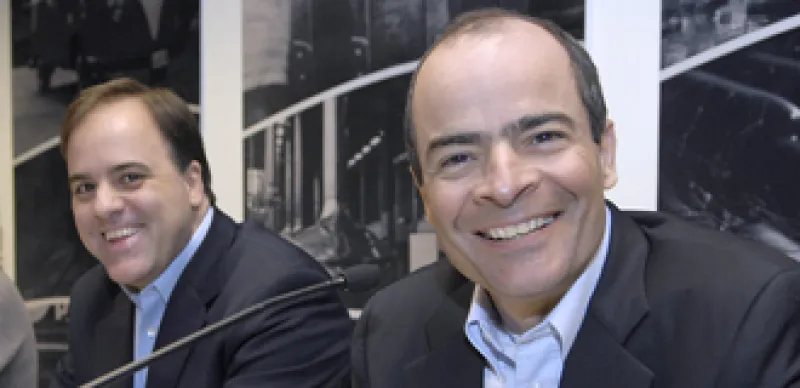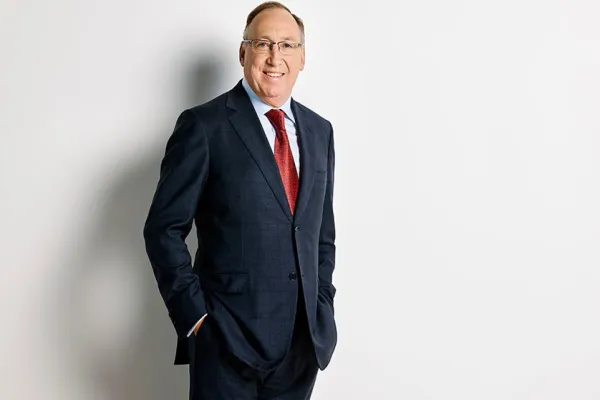Felipe Dutra, chief financial officer of Anheuser-Busch InBev, knows the true value of multitasking. When the Brussels, Belgium-based brewer InBev acquired Anheuser-Busch in late 2008, Dutra went to work locating synergies between the two companies, reducing debt and building market share for AB InBev’s top brands. His abilities have earned him praise from analysts across the board.
“We believe Felipe Dutra is an outstanding CFO,” says Trevor Stirling, leader of Sanford C Bernstein’s number one ranked research team in the beverage sector on the Institutional Investors’ 2011 All Europe Research Team. Dutra shares praise with AB Inbev’s Chief Executive Officer Carlos Brito; the duo were voted best CFO and CEO respectively, by buy and sell side analysts in the beverage category on Institutional Investor's 2011 All-European Executive Team ranking.
Over the past few years, the beer industry had been consolidating, and InBev’s acquisition, of St Louis, Missouri-based Anheuser-Busch was part of that wave. As word of the negotiations started to leak in June 2008, however, no one could have predicted what a feat the completion of the deal would be. That September, US investment bank Lehman Brothers Holdings filed for bankruptcy spurring a worldwide credit crunch and stock market drop that sent world markets into a tailspin. “No one knew how the global economic crisis would evolve,” says Dutra. Still, the beverage company forged ahead. “The deal required a lot of focus and sense of urgency to complete,” he notes.
Complete it they did. The Belgium-based beverage company paid $52 billion for Anheuser-Busch in an all-cash deal completed on November 18, 2008, with $45 billion in debt financing. The transaction made AB InBev one of the top five consumer product companies in the world in terms of revenue. “It marked one of the biggest ever, cross-border, all-cash deals executed in one of the toughest moments of our lives, in terms of the economy and the overall financial crisis,” says Dutra.
Merger complete, the company went to work growing profits by capturing synergies between Anheuser-Busch and InBev, shoring up the company’s balance sheet and taking advantage of the name brand recognition of many of the company’s top selling beers to gain market share. “In 2008 and 2009 we were executing the deal, integrating the companies, working to meet our commitment to complete $7 billion in divestitures, taking out bonds, and preparing to list on the NY Stock Exchange,” Dutra says. By the end of 2009, the brewer had announced divestitures of $9.4 billion. In 2010, AB InBev was then able to “dedicate more time and attention to capturing the opportunities to share best practices across InBev and Anheuser-Busch and work more deeply on our plan to make Budweiser our flagship global brand,” Dutra says.
The approach was a successful one. By the end of 2010, the beverage giant posted revenue of $36.297 billion, a 4.4% rise over its 2009 figure. Normalized earnings before interest, tax, depreciation and amortization (EBITDA) rose 10.6% in 2010 to $13.869 billion. Earnings per share shot up to $3.17 from $2.48 in 2009, an increase of 27.8%.
Dutra’s abilities to achieve the company’s stated goals garnered praise from analysts. “He displays the rare combination of being able to master the managing of complex M&A deals, while keeping tight control of day-to-day operations and costs, and optimizing the balance sheet structure, all this in a complex multi-currency environment,” says Stirling.
Investors were also pleased, most notably with the brewer’s 2010 fourth quarter profits, which shot up 5.9% to $9.5 billion, beating many analyst estimates. Its 2010 fourth quarter normalized EBITDA grew to $3.895 billion compared to $3.105 billion in the fourth quarter 2009, a 21.9% rise. To top it off, the beverage company surprised investors when it announced that it was doubling its dividend payout in 2010 to 0.80 euro, from 0.38 euro the previous year, resulting from cost savings that exceeded company targets, including a decrease in company debt of $5.5 billion to $39.7 billion in 2010.
“AB InBev has a history of setting and hitting its targets, and this year the team exceeded their own and the markets expectations,” says Ian Shackleton, leader of Nomura International’s beverage research team, which took second place on Institutional Investor’s 2011 All-Europe Research Team. Company guidance for savings from synergies of the Anheuser-Busch acquisition were projected at $2.25 billion after three years, ending 2011, but AB InBev’s year-end report showed savings at $1.98 billion after just two years, well ahead of analyst expectations. “We have a track record of doing accretive, value creation transactions by integrating assets very quickly, sharing best practices and capturing synergies, be it top line or cost-related,” Dutra says. Synergies for 2010 alone were at $620 million.
With a portfolio that now boasts over 200 brands, including global flagship brands such as Budweiser, Stella Artois, and Beck’s, AB InBev spent much time in 2010 focused on building market share. “We are taking a focused approach, investing the majority of our time and resources into those brands that have highest growth potential,” says Dutra. That includes multi-country brands such as Leffe and Hoegaarden and various locally known brands including Bud Light, Michelob, Brahma, and Skol.
AB InBev’s strategy also includes making a major push into the emerging markets, most notably in Brazil, where AB InBev boasts a 70.1% market share, owning local brands Antarctica, Bohemia, Brahma, and Skol. “Brazil is the best place to be in the beer business right now, due to its strong consumer environment,” notes Shackleton.
The company’s launch of its Budweiser brand in Brazil will take place the second half of 2011. AB InBeV has also secured a sponsorship deal with the Fédération Internationale de Football Association (FIFA) to promote the Bud brand at the 2014 World Cup football games, in Brazil. “We are building on our leadership position in the most attractive markets in the beer industry,” says Dutra. Analysts agree with the move. “We view a strong Brazilian beer market driving solid top-line growth plus upside from foreign exchange hedges on raw materials on the bottom line,” notes Stirling.
In 2010 AB InBev also launched its Bud brand in Russia and increased its market share of the brand in the UK and in China, where it has been busy promoting its Budweiser Lime brand. “We are very encouraged by the results we have achieved worldwide and we expect total Budweiser volume to be in positive territory globally, despite declines in the US,” says Dutra. Sales of the Bud brand on global basis grew by 1.7% for the first time last year in more than two decades.
In the US AB InBev has been making efforts to recapture sales of its top selling Bud brand, which has declined in recent years due to the recession and a rise in unemployment in the US. In North America, total beer volume decreased 3.1% in 2010 and 1.3% in the fourth quarter. To push the brand, the beverage company promoted the Bud brand during the soccer World Cup in South Africa last summer, through a FIFA sponsorship deal. Its Bud Light brand was an exclusive sponsor of the Super Bowl, through a deal with the National Football League. Marketing initiatives have included a full range of advertising, social media, sponsorships and events to engage consumers. “We are committed to reversing that trend in the US, by first stabilizing the brand and then planning for growth, which requires creative marketing, and resources invested,” says Dutra says.
To keep shareholders and abreast of the company’s initiatives around the world, Dutra and CEO Brito make sure to update them often. “I make myself very accessible by meeting with investors one-on-one in my office and at road shows,” he says. Dutra and Brito also host conference calls with open question and answer sessions and attend selected conferences in the US and worldwide. “We try to expand our reach in a short period of time, with group meetings of 15 or 20 at a time, so that the travel time is used most efficiently,” he notes. The duo typically split the time each spends in the US and Europe. Every three years ABInBev holds site visits in key markets around the world.
Dutra received kudos for his team management as well. “He has a culture of performance that is unrivaled in the consumer world,” says Shackleton, who notes that InBev’s original founders were investment bankers, which has imbued the company with a performance culture similar to that of an investment bank. “There are big bonuses for those who deliver and no future for those that don’t,” Shackleton explains.
Given its scale and the sheer number of brands ABInbev owns, with 14 brands generating more than $1 billion in revenue per year, the beverage company is not aggressively pursing any M&A opportunities, says Dutra. “We are pleased with the foot-print we have,” he says. On the other hand, Dutra won’t write off the possibility – if the right opportunity presents itself. “If we find there is the right deal out there for us, there is nothing to prevent us from pursuing it,” he adds.






